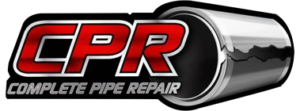Trenchless vs. Traditional Sewer Repair: Which Is Right for Dayton Homes?
When your sewer line fails, you must dig up your yard and walls or opt for a less invasive trenchless solution. For Dayton homeowners, factors like lawn restoration costs, budget, and pipe condition all come into play. This post we’ll compare traditional sewer replacement with trenchless methods, highlighting pros, cons, and decision cues to help you choose the right approach.
1. What Is Traditional Sewer Repair?
Traditional repair involves excavating a trench above the damaged pipe section to remove and replace it with new pipe:
- Process: Dig, remove old pipe, install new PVC or cast‑iron pipe, backfill, and restore landscaping.
- Typical Uses: Severe collapses, multiple joint failures, or entire line replacement scenarios.
- Considerations:
- Disruption: Lawn, driveways, sidewalks, and landscaping must be torn up and restored.
- Timeline: Project length varies with trench length, often several days to a week.
- Cost: Excavation, restoration, and labor can add up—see more on the cost of delaying sewer repairs for budget planning.
2. What Is Trenchless Sewer Repair?
Trenchless methods rehabilitate existing pipelines without large trenches, typically through:
- Pipe Bursting: Fractures the old pipe outward as a new pipe is drawn in behind.
- Cured‑in‑Place Pipe (CIPP) Lining: Inserts and inflates a resin‑saturated liner that cures to form a new pipe inside the old one.
- Benefits:
- Minimal Excavation: Only small access pits are needed at the ends of the repair.
- Faster Completion: Many projects finish in one to two days.
- Less Landscape Impact: Driveways and lawns remain intact.
- Learn More: See our trenchless pipe repair overview for a deeper dive into lining expectations.
3. Pros & Cons Comparison
| Factor | Traditional Repair | Trenchless Repair |
|---|---|---|
| Disruption | High—extensive digging and restoration | Low—small pits only |
| Cost | Moderate to High (excavation + restoration) | Moderate (specialized equipment) |
| Timeline | Several days to a week | 1–2 days |
| Pipe Condition | Best for completely collapsed or replaced lines | Ideal for structurally sound pipes with localized damage |
| Lifespan | New pipe lifespan (50+ years) | Lined pipe lifespan (25–50 years) |
4. Choosing the Right Method for Your Dayton Home
Consider these factors before deciding:
- Pipe Material & Condition: Traditional replacement may be necessary if video inspection reveals severe corrosion or multiple bellies. For targeted cracks or small root intrusions, a liner can suffice—learn how we inspect pipes in our video pipe inspections post.
- Yard & Driveway Impact: Homeowners with premium landscaping or concrete driveways often prefer trenchless to avoid restoration hassles.
- Budget & Timeline: Trenchless can save on restoration costs and finish faster, but traditional may be more cost‑effective for entire line overhauls.
- Long‑Term Maintenance: Both methods offer durable solutions; consider the lined pipe’s expected lifespan versus a full replacement.
5. Next Steps & Expert Consultation
Ready to decide? Schedule a camera inspection to assess your pipe’s condition—this critical first step ensures we recommend the optimal repair. CPR provides transparent quotes and professional installation, whether you choose trenchless or traditional.
Learn more about full replacements versus repairs: Sewer Line Replacement or Repair.
Need help choosing? Contact CPR today for a detailed evaluation and personalized recommendation on the best sewer repair method for your Dayton home.
